Richardson, TX Pollen and Allergy Report for Summer 2023
Pollen Allergy Trends in Richardson, TX
When is pollen lowest in Richardson, TX?

February
Lowest month total PPM
Avg. PPM
When is pollen highest in Richardson, TX?

March
Highest month total PPM
Avg. PPM
How does pollen in Richardson, TX compare to Texas?
Richardson has a higher average PPM than the state of Texas.
Richardson yearly avg PPM:
Texas yearly avg PPM:
How does pollen in Richardson, TX compare to the USA?
Richardson has a higher average PPM than the USA.
Richardson yearly avg PPM:
USA yearly avg PPM:
Is pollen worse this year in Richardson, TX?
Spring 2023 was worse than spring 2022.
Spring 2023 PPM:
Spring 2022 PPM:
Average PPM in Richardson, TX
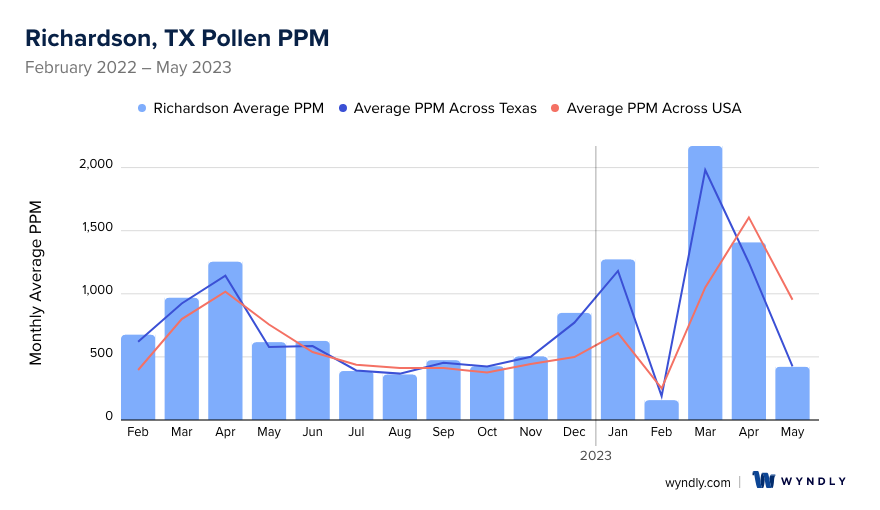
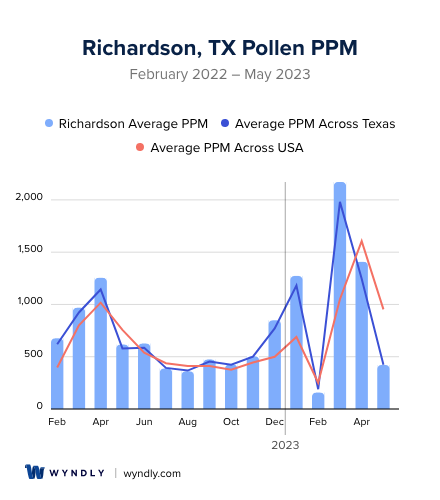
Richardson, TX Pollen and Allergy Breakdown by Month
Grass
When is grass pollen highest in Richardson, TX?
February has the highest grass pollen in Richardson, TX with an average PPM of
When is grass pollen lowest in Richardson, TX?
December has the lowest grass pollen in Richardson, TX with an average PPM of
Tree
When is tree pollen highest in Richardson, TX?
March has the highest tree pollen in Richardson, TX with an average PPM of
When is tree pollen lowest in Richardson, TX?
July has the lowest tree pollen in Richardson, TX with an average PPM of
Weed
When is weed pollen highest in Richardson, TX?
December has the highest weed pollen in Richardson, TX with an average PPM of
When is weed pollen lowest in Richardson, TX?
February has the lowest weed pollen in Richardson, TX with an average PPM of
Richardson, TX Pollen Monthly Breakdown by Pollen Type
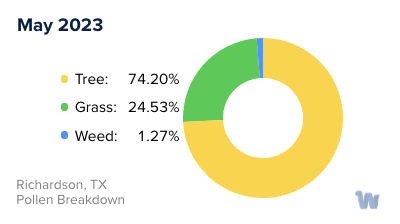
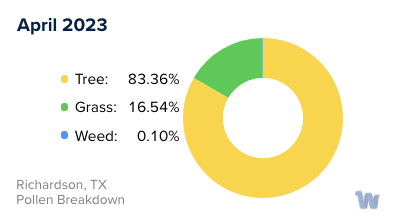
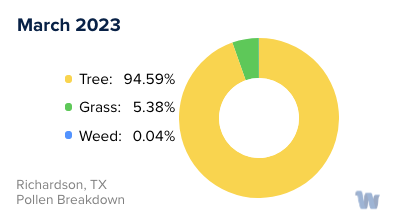
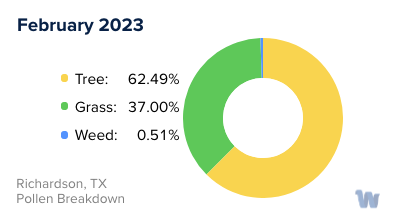
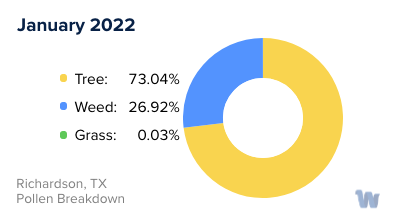

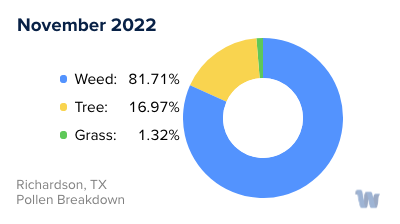
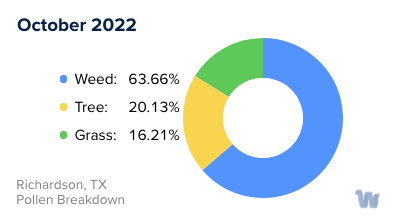
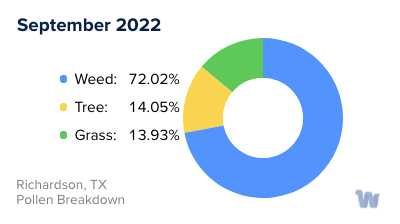
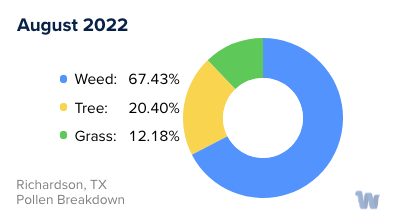
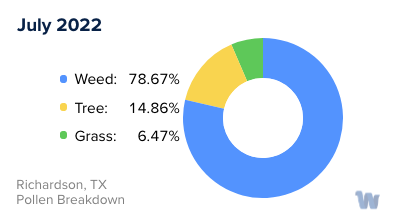
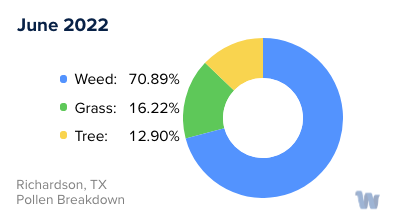
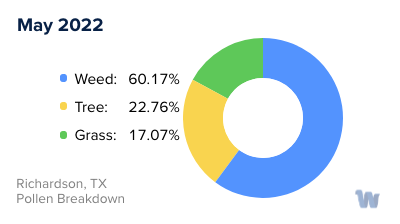
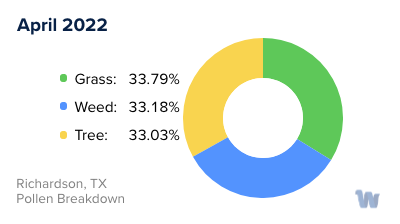
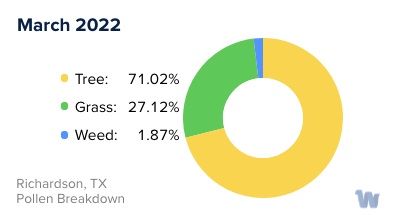
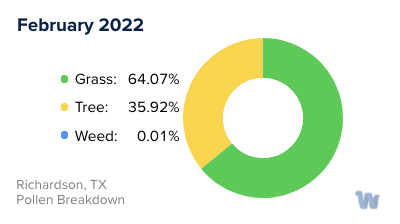
Pollen and Hay Fever in Richardson, TX
Pollen allergies, often referred to as hay fever, are a common concern for residents of Richardson, Texas. The issue arises when our immune system overreacts to pollen, triggering symptoms such as sneezing, itchy or watery eyes, and a runny or stuffy nose.
Pollen in Richardson mainly comes from three sources: trees, grass, and weeds. Each of these sources has a particular time of the year when they release the majority of their pollen, creating a year-round cycle of different types of pollen allergies.
Starting in November and lasting through February, Mountain Cedar trees release their pollen. This pollen can travel hundreds of miles, making it difficult to avoid for those sensitive to it. Right as the Mountain Cedar season wraps up, from January to May, residents get hit with a trio of new allergens: Elm, Ash, and Mulberry trees.
Springtime in Richardson, from March to May, introduces Oak and Pecan tree pollen, as well as pollen from grasses, such as Bermuda, Johnson, and Kentucky bluegrass. Because grasses are so plentiful, this can be a particularly irritating time of year for anyone sensitive to grass pollen.
June and July offer a brief respite from pollen allergies. The blistering summer heat causes the most common sources of allergies to stop producing pollen, leading to a drop in pollen counts.
However, the relief is short-lived. In August, a new and notorious allergy culprit arrives on the scene: Ragweed. This soft-stemmed, flowering weed is populous in the tropical and subtropical regions of the Americas, and it is particularly plentiful in the southwestern U.S.
including Richardson. Ragweed season lasts until November, just in time for the Mountain Cedar to come back into bloom and the cycle of pollen allergies to restart.
Understanding the types of pollen and their seasons can help residents of Richardson be better prepared for the changes in the allergy landscape throughout the year.


